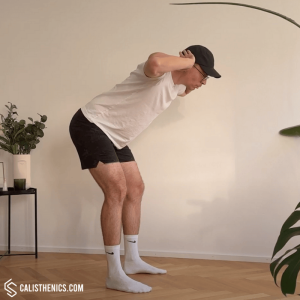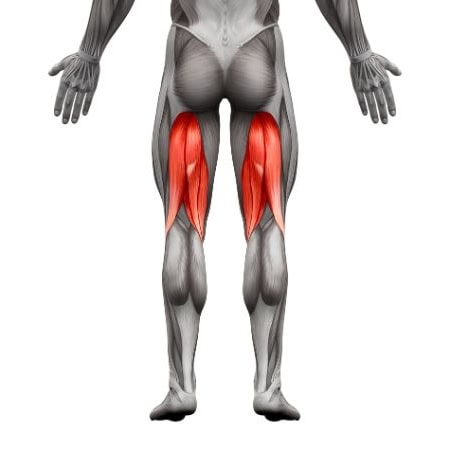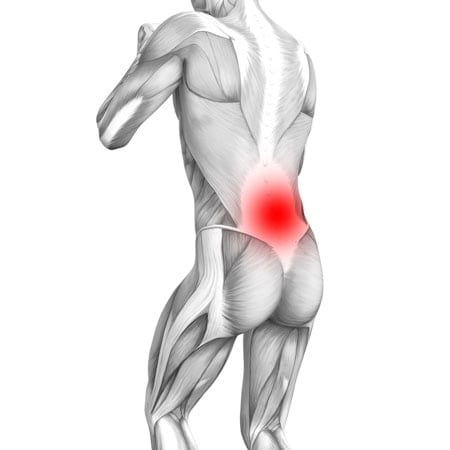Good Mornings
How to do Good Mornings?
Good mornings are a compound movement that primarily targets the posterior chain, including the hamstrings, glutes, and lower back. The exercise involves a hip hinge, which strengthens the muscles involved in hip extension, core stabilization, and posture. While good mornings are often performed with a barbell, they can also be done with body weight or resistance bands, making them versatile and effective for all fitness levels.
Steps to Perform a Proper Good Morning:
1. Starting Position (Bodyweight or Barbell):
• Stand with your feet shoulder-width apart, knees slightly bent, and your chest up.
• If using a barbell, rest it across the top of your shoulders, just below the neck, with your hands holding the bar slightly wider than shoulder-width apart. If doing a bodyweight version, place your hands behind your head, keeping your elbows out wide.
2. Engage Your Core:
• Before initiating the movement, engage your core muscles and keep your spine in a neutral position. Ensure your back stays flat throughout the exercise to prevent strain on your lower back.
3. Hip Hinge:
• Inhale as you push your hips back while maintaining a slight bend in your knees. Keep your back flat as you lower your torso toward the ground, making sure the movement comes from your hips, not your lower back.
• Lower until your torso is roughly parallel to the floor or as far as your hamstring flexibility allows while maintaining control.
4. Return to Standing:
• Exhale as you reverse the motion by driving your hips forward and returning to the standing position. Squeeze your glutes at the top of the movement, keeping your core engaged.
Benefits of Good Mornings
• Strengthens the Posterior Chain: Good mornings target the hamstrings, glutes, and lower back, which are crucial for overall lower body strength, stability, and power.
• Improves Hip Hinge Mechanics: Mastering the hip hinge during good mornings translates to better form in other exercises like deadlifts, squats, and kettlebell swings.
• Enhances Lower Back and Core Stability: By engaging the lower back and core muscles, good mornings help build a stronger, more stable midsection, reducing the risk of lower back injury.
• Boosts Flexibility in the Hamstrings: The dynamic stretching of the hamstrings during the hip hinge helps improve flexibility over time, making this exercise beneficial for athletes and those with tight hamstrings.
• Improves Posture: Strengthening the muscles along the spine and posterior chain helps improve posture, reducing slouching and promoting better body alignment.
• Functional Strength Development: The hip hinge movement used in good mornings is foundational for many daily activities and sports, helping to improve functional strength and movement efficiency.
• Great for Injury Prevention: Strengthening the lower back, glutes, and hamstrings can help prevent injuries, particularly for those prone to lower back pain or hamstring strains.
Common Mistakes to Avoid When Doing Good Mornings
• Rounding the Back: Letting your back round as you hinge forward can lead to strain or injury. Keep your spine neutral throughout the movement.
• Hyperextending the Lower Back: Avoid overextending your lower back at the top of the movement. Focus on squeezing your glutes rather than arching your back.
• Bending the Knees Too Much: The movement should come from your hips, not your knees. Keep your knees slightly bent but focus on hinging at the hips.
• Lifting Too Heavy Too Soon: Start with lighter weights to master the form before increasing resistance. Using too much weight can lead to improper form and increase the risk of injury.
Tips for the proper execution of Good Mornings
Back Positioning: Maintain a neutral spine during the entire movement. Avoid arching or rounding your back, as this can lead to strain or injury.
Core Engagement: Keep your core tight throughout the exercise to stabilize your spine and prevent your lower back from rounding.
Controlled Movement: Perform the movement slowly and with control, focusing on the hip hinge and keeping the motion smooth.
Knee Position: Keep a slight bend in your knees, but avoid excessive bending. The movement should come primarily from the hips, not the knees.
Breathing: Inhale as you lower your torso and exhale as you return to the starting position, keeping your breath steady to help with control and stabilization.
Muscles worked when doing Good Mornings
Primary Muscles:
•Hamstrings: The primary muscles engaged during the hip hinge, responsible for extending the hips and supporting the lower body.
•Glutes: Gluteus maximus and medius, engaged during the hip hinge and extension to lift and stabilize the body.
•Lower Back: Erector spinae muscles are heavily engaged to support the spine and maintain posture throughout the movement.
Secondary Muscles:
•Core: Abdominal muscles and obliques help stabilize the spine and maintain balance.
•Quadriceps: Assist in stabilizing the lower body, especially as you hinge forward.
•Upper Back: Trapezius and rhomboids help keep the barbell in place (if using a barbell) and maintain posture.
•Hip Adductors: Engaged for additional stabilization during the hinge movement.
Primary Muscle(s):
Secondary Muscle(s):
Equipment needed for Good Mornings
No equipment needed for this exercise.
Adjust the difficulty of Good Mornings
How to make Good Mornings harder?
How to make Good Mornings easier?
How to make Good Mornings harder?
To make Good Mornings harder:
-
Use a Barbell or Dumbbells: Add a barbell or hold a pair of dumbbells at shoulder height to increase the resistance and challenge the posterior chain more.
-
Increase Weight: Gradually increase the weight on the barbell or use heavier dumbbells as you build strength and endurance.
-
Use a Resistance Band: Place a resistance band under your feet and hold the handles near your shoulders to provide gentle resistance while maintaining control.
-
Slow Down the Tempo: Perform the lowering phase (eccentric) more slowly to increase time under tension and further engage the hamstrings and lower back.
-
Single-Leg Good Mornings: For an advanced variation, perform good mornings with one leg lifted off the ground to further challenge your balance, core, and glutes.
How to make Good Mornings easier?
To make Good Mornings easier:
-
Use Bodyweight: Start with just your body weight, placing your hands behind your head or across your chest, to focus on mastering the hip hinge without added resistance.
-
Limit Range of Motion: If you’re new to the movement or have limited hamstring flexibility, only lower your torso as far as your flexibility allows while maintaining a flat back.




